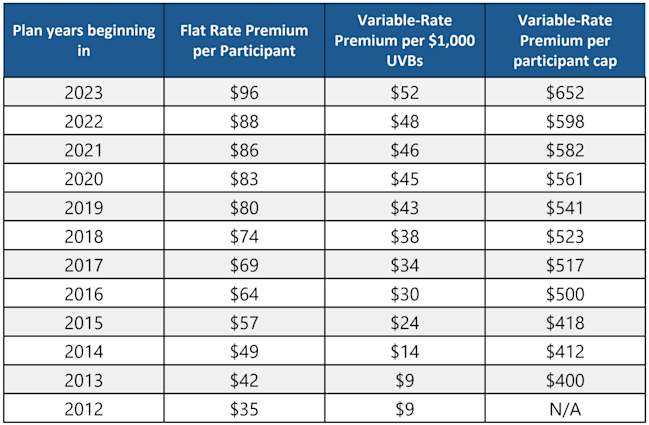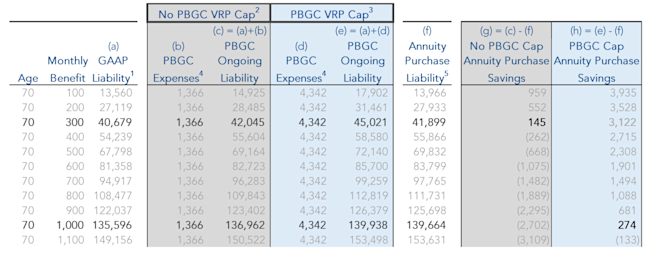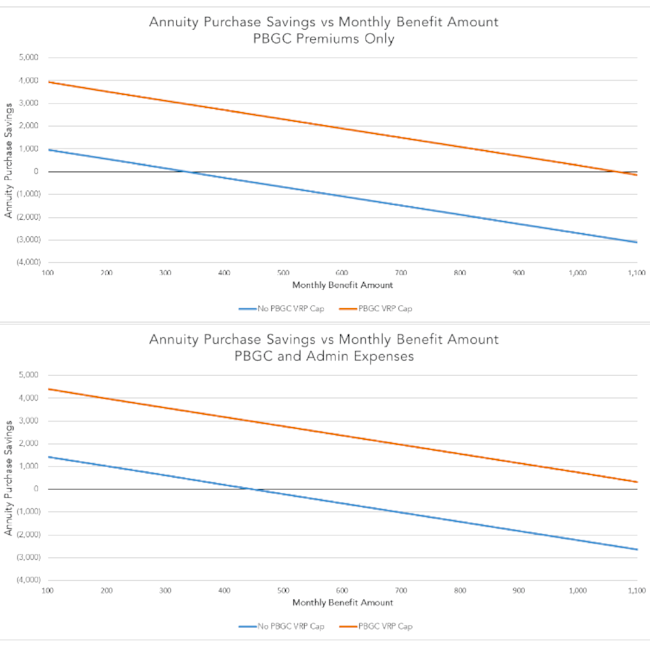Annuity Purchases for Retirees with Small Benefits - Guaranteed Savings
Executive Summary
The cost to maintain a defined benefit pension plan has skyrocketed. The primary reason is the premiums paid to the Pension Benefit Guaranty Corporation (PBGC).
Most plan sponsors have reduced their head counts in recent years to effectively manage these premium overhead costs. The first wave focused on lump sum windows for terminated vested participants. In the past five years though, hundreds of sponsors have purchased annuities for retirees. In fact, plan sponsors purchased a record-setting $51 billion in annuities last year alone and annuity purchases for 2023 are on track for another record-setting year.
Annuity purchases for retirees with small benefit amounts can be an easy and highly effective way to reduce PBGC premiums and save money at no cost to plan participants. For plan sponsors not subject to the PBGC Variable Rate Premium Cap, purchasing annuities for retirees receiving less than $300 monthly will save the plan money. For plan sponsors subject to the cap, purchasing annuities for retirees receiving less than $1,000 monthly will save the plan money.
PBGC Premium Background
PBGC premiums have two parts -- a fixed per participant cost and a variable cost based on the amount of the plan’s unfunded liability. The variable-rate premium is subject to a per-participant cap. Each part has grown significantly over the last decade. In fact, flat-rate premiums have grown by more than 250% since 2012 while variable-rate premiums have grown by more than 550% over the same time period. That growth has been so large that many plans are now paying more than 1% of plan assets to the PBGC. For plan participants who no longer work for the company, sponsors are paying premiums to the government simply for the right to pay those former employees their pension starting sometime in the future.

Doing the Math
Many plan sponsors perceive annuity purchases as too expensive. Generally, plan sponsors arrive at this conclusion when comparing their GAAP (accounting) liability to the cost of an annuity purchase, where the annuity purchase price is typically a couple percent higher. This comparison ignores overhead costs though (mostly PBGC premiums), as PBGC premiums and other overhead are not generally reflected in GAAP liabilities. When the present value of future PBGC premiums is added to GAAP liabilities, we have found that the annuity purchase price is often the lower number, and the annuity purchase would result in improved corporate financial statements and ultimately a smaller cost of ownership of the plan for the company. This is especially true for retirees with small benefit amounts, as PBGC premiums do not vary with the size of a participants benefit.
With this concept in mind, we set out to identify a "break-even" point. In other words, if you as a plan sponsor were going to purchase annuities for a subset of your retiree population, where should you draw the line in order for the transaction to make financial sense? For retirees with benefits below the break-even point, the annuity purchase will cost less than retaining them in the plan and continuing to pay PBGC premiums. For retirees with benefit amounts above the break-even point, the annuity purchase may be more expensive than retaining the participants in the plan. Below are the results of our analysis on a hypothetical age 70 retiree with varying monthly benefit amounts. Our results were very similar for retirees at different ages.
We also conducted our analysis on two hypothetical plans, one which is subject to the PBGC Variable-Rate Premium Cap, and one which is not. The break-even points for both hypothetical plans are shown in bold below. You will see that the break-even point for plans not subject to the PBGC VRP Cap is approximately $300 and for plans subject to the cap the break-even point is approximately $1,000. If a given plan is paying PBGC variable-rate premiums but is not subject to the VRP Cap, the break-even point for the plan would likely fall between the $300 and $1,000 levels of our two hypothetical plans.

The only administrative cost component we assessed was PBGC premiums. When determining the break-even point for a specific plan, other administrative costs (e.g., the cost of processing monthly checks) could be included. This makes the case for purchasing annuities even more compelling and drives break-even points even higher, identifying additional savings sponsors could attain from an annuity purchase. We show the effect of including other administrative costs in the two-line graphs below, one of which considers PBGC premiums only and the other includes a $40 per person per year administrative expense.

GAAP Liability calculated using Pri-2012 Mortality table with MP-2021 improvement scale as well as the October Three's GAAP corporate bond yield curve as of 12/31/2022.
For this analysis we assume the plan is never subject to the PBGC Variable Rate Premium (VRP) Cap.
For this analysis we assume the plan will be subject to the PBGC VRP Cap for the next 5 years.
For plans not at the PBGC VRP Cap, this is the present value of all future PBGC Flat-Rate Premiums. For plans subject to the PBGC VRP Cap, this also includes the present value of PBGC Variable-Rate (capped) Premiums over the next 5 years.
The Annuity Purchase Liability assumes the annuity purchase price is 3% larger than GAAP. This is consistent with October Three's historical findings for retirees. See here for additional details: https://www.octoberthree.com/january-2023-annuity-purchase-update/
